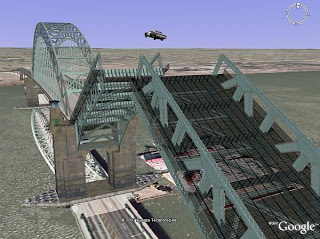How long do you think the recession will affect you? If no measures are taken, the recession would be just a mere glitch to the already degrading environmental problems that we are facing today. A “mere” glitch can help fuel global warming leading the catastrophic end of the civilization according to “Earth2100” a documentary that was broadcast on June 2nd, 2009 from 9 pm to 11pm eastern on American Broadcasting Company (ABC).
Very well animated future features an ordinary Lucy, American child, girl, woman and the wise lady, as a spokesperson of the depressing future. The future is characterized in four major phases. First, a concession that does not reach on global warming in 2015 when the fossil fuels will be harder to find and more expensive to consume, therefore, further economic meltdown; second by 2030, two third of the world population will be adversely influenced by the rainfall pattern, therefore, basic need water would start becoming scarce; third by 2050, the world population could take major U turn with the increased world population by approximately 9 billion, sea level rise will force the world map to redrawn; forth, continuous drought, lack of food resources for the world to depend and see level rise up to few meters might flood major cities like New York displacing reducing total world population around 3 billion by 2100, if no measures are taken. The documentary does not refer “economic recession” as a key to the end of the civilization; however the global warming and the need of economic development in the third-world and the emerging industrial powers like China and India might go hand by hand, therefore, posing more threats to global concession climate change.
The documentary is excellent in its “awakening call”. It makes you feel that it might actually be possible. The details on the facts and the quotes used in the documentary can be found in the official site of ABC channel. Lucy, an Emergency Medical Technician (EMT) at a hospital does her best to help protect the future but ends up losing her husband, an engineer devoted to protect New York City by building a see barrier and her son-in-law as a product of initial aftermath of ever-increasing global warming. Not to mention the characterization of the overall “worst case scenario”, the documentary does an excellent job at prostrating how the “mob movement” will force the remaining “clean and sustainable” world to turn into an avoidable chaos. Therefore, there is no safe place anywhere on earth if a big disaster, like global island takes place. Documentary does show the better future, if measures are taken right now. It is up to you to choose which future you want to see.
Overall, the message is the civilization might end in next century if we fold our hands now. The ideas are not new. This can be categorized and another Al Gore documentary, however the fact and storytelling with the animated future has taken the visual reference to things we do not want to envision in our lifetime. As nothing can be predicted accurately given the nature of our existence, natural forces and scientific breakthrough, the documentary has done great job at showing the “what if” scenario.
One of the major drawbacks is that the scientific achievement, research, positive initiatives like that of the metropolitan Washington DC, New York, Toronto where green roofs and streets, bike- sharing concepts are completely ignored. Even if there is the worst case scenario, the little thing already done from little community can moderate the global warming if not eradicate. Overall, the achievable heavenly future on the other hand rolls the dice in the documentary Earth2100 where “nothing is impossible if human wishes with positive hearts and spirits”.

Easter Island is an excellent metaphor for how people used up the last tree in order to feed themselves and ended up dying. The world is moving towards the same scenario. It is not the fact that we consume natural resources, it is the fact that we are not moving forward fast enough to protect what we have left. The sustainability is another issue that is overlooked.
The documentary refers the developed nations to take lead in the development and deployment of the green technology so that the third world countries can benefit from it. Being the owner of the technology, the developed countries should move forward with an alternative future of sustainability that can harness widely talked about solar and wind power and other resources. If self-sustaining cities with food production and the gardening on the rooftops are created, the brighter future will be the “paradise (from the documentary)” that we can imagine.

















